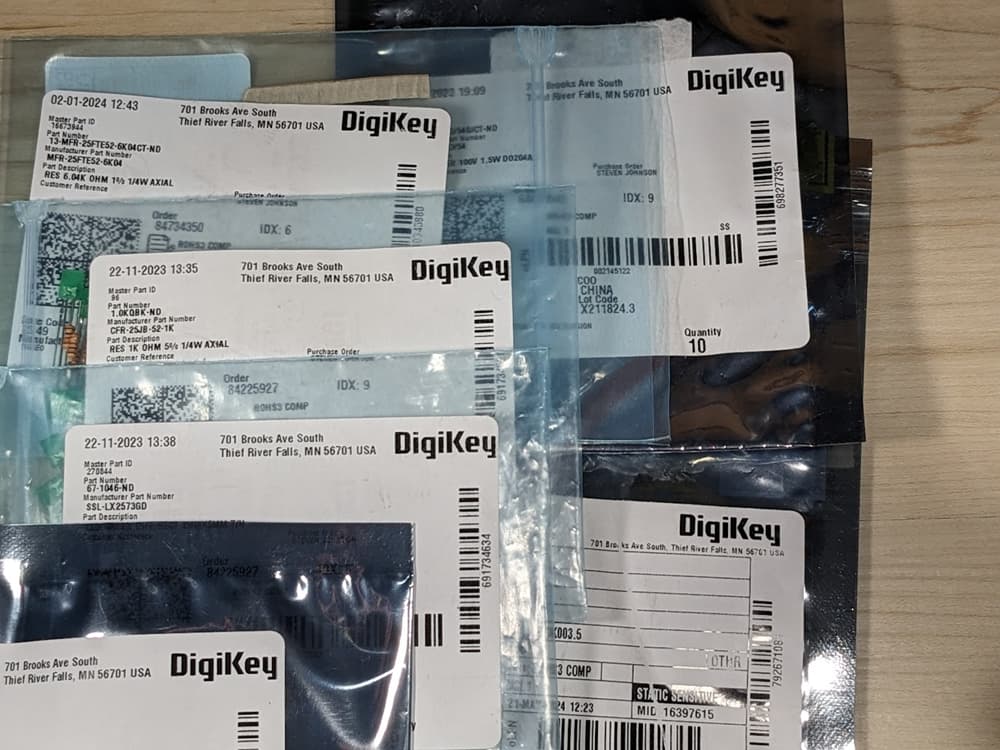Is Direct Field Support Dying? An Application Engineer’s View from DigiKey
Article summary
There are multiple ways for distributors to support the automation industry. You may know your reps on a first-name basis as they travel to your facility. Other application resources, like me, may be hidden in the larger DigiKey support structure. Let’s compare the two techniques and see if there are parallels to the electronics industry of the past.
Are technical support methods for industrial automation changing?
Recently I attended product training for a large supplier of industrial sensors. As we introduced ourselves, I was asked how many times I visited my customers. As a DigiKey Applications Engineer I was surprised by the question and blurted out, “Zero.”
This is an important question, as it perfectly captures the current state of supplier relationships. Some distributors are on a first-name basis with their customers. These road warriors travel three to four days a week. They are responsive to your requests and arrive ready to demonstrate the latest technology.
Yet, we recognize that the industrial automation distributor-to-end-user relationship is like the electronics industry of the past. For electronics, this highly personal territory-driven model has largely disappeared.
Do you suppose this could happen to the automation sector?
DigiKey origins
DigiKey is best known as a global distributor for electronic components. Yet, its roots reflect today’s relationship between OEMs, distributors, and end customers.
In the late 1960s Dr. Ronald Stordahl designed and then offered an amateur radio accessory known as the Digital Keyer as a low-cost way for Morse code speed demons to communicate. At that time, parts were sold in bulk. While the Digital Keyer was successful, the DigiKey we know today was born from selling the leftover parts from the kit. It was a successful relationship especially for the end-customer.
DigiKey today
Today, DigiKey is a multi-billion-dollar e-commerce business offering millions of components from thousands of trusted manufacturers. In addition, DigiKey features a Marketplace allowing customers to access additional parts from over one thousand suppliers.
DigiKey offers support without suitcases
I’ve been an application engineer with DigiKey for nearly two years and I have never officially traveled to a customer’s facility. The closest I’ve been is a summer trip with my son to explore machine shops across Minnesota and the Dakotas. DigiKey boxes and distinctive blue bags (Figure 1) were present.
Figure 1: DigiKey’s iconic antistatic bags quietly show up in your shop.
Author is part of a larger applications engineering team
Officially, I am an electrical engineer serving in DigiKey’s Application Engineering department. We are a worldwide team of technicians and engineers who stand ready to assist. We offer a phone service, chat, and technical forum. Your technical questions are first routed to the technicians who will then elevate them to the engineers. If we are unable to answer your question we will seek guidance from the manufacturer’s application engineers.
I appreciate the fact that DigiKey customers ask a wide range of questions. With millions of components, questions run between basic resistor identification all the way to selecting the appropriate controller for a thermal PID loop. As expected, many of the questions involve students and field engineers learning their craft.
Staying sharp
To stay abreast with technology, we are constantly in training mode. Personally, I spend at least a day each week deep in datasheets. From time to time, I attend training and even participate in trade shows such as Automate.
Proactive support
The AE department is also proactive as we write articles of interest. This includes FAQs as well as full-length academic articles with featured projects to show real-world product examples. For example, I recently wrote a multipart article describing how to construct a User Defined Function Block (UDFB) encapsulated state machine for the Siemens S7-1200. Each part of the series explored a different implementation including LD, FBD, and ST. While this is not the same as an in-house visit, the material is ready for you when you start coding your PLC.
Lessons from DigiKey customers
Before departing, let’s talk about pricing and parts availability. DigiKey’s online catalog provides live parts inventory as well as lead times for non-stock parts. Allow me to add a few tips learned from the TechForum:
-
Line down? If your line is down due to a failed component, consider substitutions. If DigiKey doesn’t have the part you need, you may be able to locate an in-kind replacement. With a large inventory plus fast shipping DigiKey is in a good position to help you restore your equipment.
-
Plan ahead? To hedge against supply chain vulnerability, consider selecting the “Normally Stocking” and “Active” production options as you search components. This, along with total number of components currently in stock serves as proxy for future parts availability.
Parting thoughts
The electronics industry was once like the automation industry of today with direct in-person interactions between distributor and end user. While there are advantages to this relationship, the increased prevalence and efficiency of OEM-provided videos and detailed documentation is disruptive.
What’s lost when a field representative no longer walks your factory floor but the parts still arrive?
Sincerely,
Aaron Dahlen
Related articles by this author
If you enjoyed this article, you may also find these related articles helpful:
- Guide to Troubleshooting Industrial Control and Automation Equipment
- Introduction to the 3-Wire Start-Stop Circuit
- Use of an Interposing Relay for Increased Contactor Speed
About this author
Aaron Dahlen, LCDR USCG (Ret.), serves as an application engineer at DigiKey. He has a unique electronics and automation foundation built over a 27-year military career as a technician and engineer which was further enhanced by 12 years of teaching (interwoven). With an MSEE degree from Minnesota State University, Mankato, Dahlen has taught in an ABET-accredited EE program, served as the program coordinator for an EET program, and taught component-level repair to military electronics technicians. Dahlen has returned to his Northern Minnesota home and thoroughly enjoys researching and writing articles such as this.

